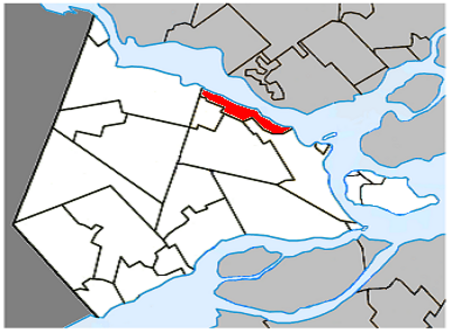Hudson, Quebec

Hudson is an off-island suburb of Montreal, with a population of 5,411 (2021 Census). It is located on the south-west bank of the lower Ottawa River, in Vaudreuil-Soulanges Regional County Municipality. Situated about 60 kilometres (37 mi) west of downtown Montreal, many residents commute to work on the Island of Montreal. Hudson is a municipality within Greater Montreal. An informal rural agglomeration since the early part of the 19th century, the Town of Hudson was formally created in June 1969 by merging the villages of Hudson, Hudson Heights and Como. A relatively wealthy town, Hudson is known for its large, turn-of-the century houses, many of which border the Lake of Two Mountains. A ferry from Hudson takes cars across the lake (a widening of the Ottawa River) to the village of Oka. Hudson has been compared to culturally and demographically similar Quebec towns such as the Eastern Townships villages of North Hatley and Brome Lake as well as nearby Senneville. All four municipalities border a body of water (used extensively for recreation year-round) and include a blend of French and English residents.
Excerpt from the Wikipedia article Hudson, Quebec (License: CC BY-SA 3.0, Authors, Images).Hudson, Quebec
Cameron Street,
Geographical coordinates (GPS) Address Nearby Places Show on map
Geographical coordinates (GPS)
| Latitude | Longitude |
|---|---|
| N 45.45 ° | E -74.15 ° |
Address
Cameron Street 155
J7T 2H8
Quebec, Canada
Open on Google Maps





